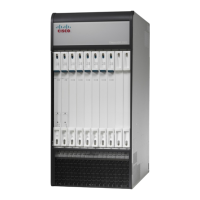•
CLI Configuration File: This file type is identified by its .cfg extension. These are text files that contain
CLI commands that work in conjunction with the operating system software image. These files determine
services to be provided, hardware and software configurations, and other functions performed by the
system. The files are typically created by the end user. You can modify the files both on and off-line
and use descriptive long filenames.
•
System File: Only one file identified by a .sys extension is used by the system. The boot.sys file contains
system-specific information, which describes how the system locates, and in what priority it loads, file
groups (paired .bin and .cfg files) from its boot stack.
•
Abridged Crash Log: The abridged crash log, identified by its crashlog filename, contains summary
information about software or hardware failures that occur on the system. This file is located in the
/flash/crsh2/ directory on the device. You can view the contents of this file through the CLI, but you
cannot modify the file.
Understanding the boot.sys File
The system uses the boot.sys file to store the prioritized boot stack parameters and file groups the system uses
during startup. Modify this file only through system CLI commands and not through external means. Boot
parameters contain information the system needs to locate the operating system image file, including:
•
bootmode: This setting is typically configured to normal, and identifies how the system starts.
•
network interface configuration: Use these optional boot method settings when you configure the
system to obtain its operating system image from an external network server that is using one of the
management LAN interfaces on the MIO/UMIO/MIO2 card.
•
boot stack information: The boot stack is made up of prioritized file group entries that designate the
operating system image file and the CLI configuration file to load.
When a system is started for the first time, the boot.sys file is configured to use the normal boot mode and
load the operating system software image from the /flash directory.
There is no CLI configuration file contained on the local file system. This causes the system to automatically
start its CLI-based Quick Setup Wizard upon the first successful boot. Refer to Getting Started for more
information on using the Quick Setup Wizard.
Maintaining the Local File System
Use CLI commands to manage and maintain the devices that make up the local file system. Execute all the
commands described in this section in the Exec Mode. Unless otherwise specified, you must have security
administrator or administrator privileges to execute these commands.
File System Management Commands
Use the commands in this section to manage and organize the local file system.
ASR 5500 System Administration Guide, StarOS Release 21.4
120
Software Management Operations
Understanding the boot.sys File

